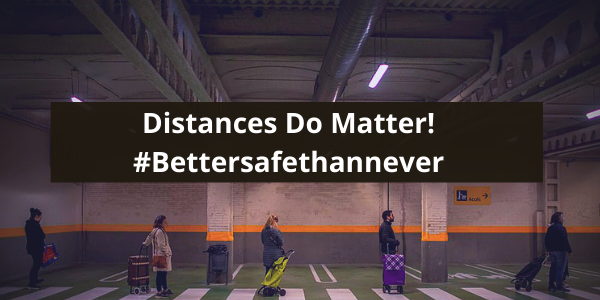
“Distances Do Matter! #Bettersafethannever”
As a move to halt the spread of the coronavirus, the governments around the world have decided to practice “Social Distancing”. At least for now, Social Distancing is our new ‘normal’. The main intention is to slow down the spread of the virus by decreasing the number of people who get sick at one time. Even the Centers for Disease Control and Prevention recommended against any gatherings of 50 or more people over the next eight weeks. So, how can we practice social distancing? Let’s have a look.
What Does Social Distancing mean?
Minimal contact with people or physical distance between yourself and others, Social distancing is all about maintaining a ‘distance’. According to the Ministry of Family and Health Welfare, Social distancing is a non-pharmaceutical infection prevention and control intervention implemented to avoid/decrease contact between those who are infected with a disease-causing pathogen and those who are not, to stop or slow down the rate and extent of disease transmission in a community.
How can we practice Social Distancing?
Social Distancing is not an easy thing to do as it involves sacrifices, like, sacrificing the physical contacts, sacrificing the good times outside, sacrificing the parties and all. But it’s necessary when facing a pandemic. One can practice social distancing by avoiding public spaces and unnecessary social gatherings, especially events with large numbers of people or crowds. This will lower the chance of you picking up the new coronavirus.
In the work environment, you can practice this by working from home if possible, organising meetings via video calls rather than doing them in person and avoiding unnecessary use of public transport. The World Health Organization recommends maintaining a distance of at least one metre between yourself and anyone who is coughing or sneezing. It is also recommended to avoid physical contact with others, including handshakes.
But please remember that it’s okay to go outdoors for fresh air and exercise. The point is to avoid being in close contact with people.
How effective is Social Distancing?
Previous outbreaks, including the 1918 flu pandemic, the 2014 Ebola outbreak and other studies suggest that social distancing can effectively limit the spread of infections. Though there are still confusions on how the new coronavirus spreads, similar viruses are predominantly transmitted by droplets emitted from the mouths and noses of infected people when they cough or sneeze, which can land on surfaces and then other people’s hands.
What are the cons of Social Distancing?
Social distancing may take us to an increased level of loneliness. But there are things everyone can do to mitigate their downsides. A phone call or a video chat will do. This will aid all of us in staying as healthy as possible during this time.
This has already affected the global economy because people are staying at home and demand for goods and services has fallen.
The Government Advisory
As mentioned earlier, the State/UT Governments have issued several measures as they consider it necessary. All these proposed interventions shall be in force till the 31st of March, 2020 and will be reviewed as per the situation.
Here are some highlights of the interventions proposed by the Ministry of Health and Family Welfare. To read the complete document, please refer to the link below.
- Closure of all educational establishments, gyms, museums, cultural and social centres, swimming pools and theatres. Students should be advised to stay at home.
- Encourage private sector organizations/employers to allow employees to work from home wherever feasible.
- Restaurants to ensure hand washing protocol and proper cleanliness of frequently touched surfaces.
- Non-essential travel should be avoided. Buses, Trains and aeroplanes to maximize social distancing in public transport besides ensuring regular and proper disinfection of surfaces.
- Hospitals to follow the necessary protocol related to COVID-19 management as prescribed and restrict family/friends/children visiting patients in hospitals.
- Limit the number of social gatherings and ensure no overcrowding/at least one metre distance between people. Avoid and postpone events if possible, including competitions and sporting events.
Source: The New York Times, News Scientist, https://www.mohfw.gov.in/SocialDistancingAdvisorybyMOHFW.pdf